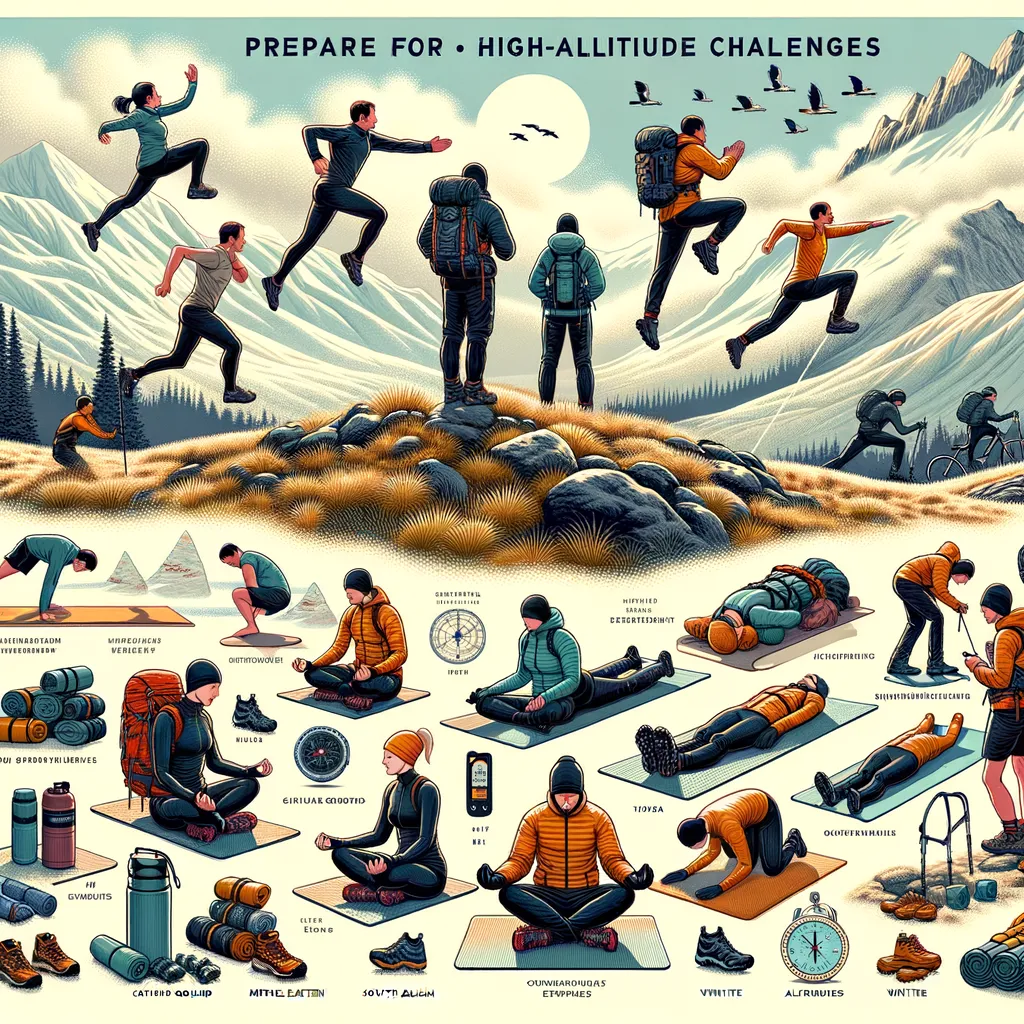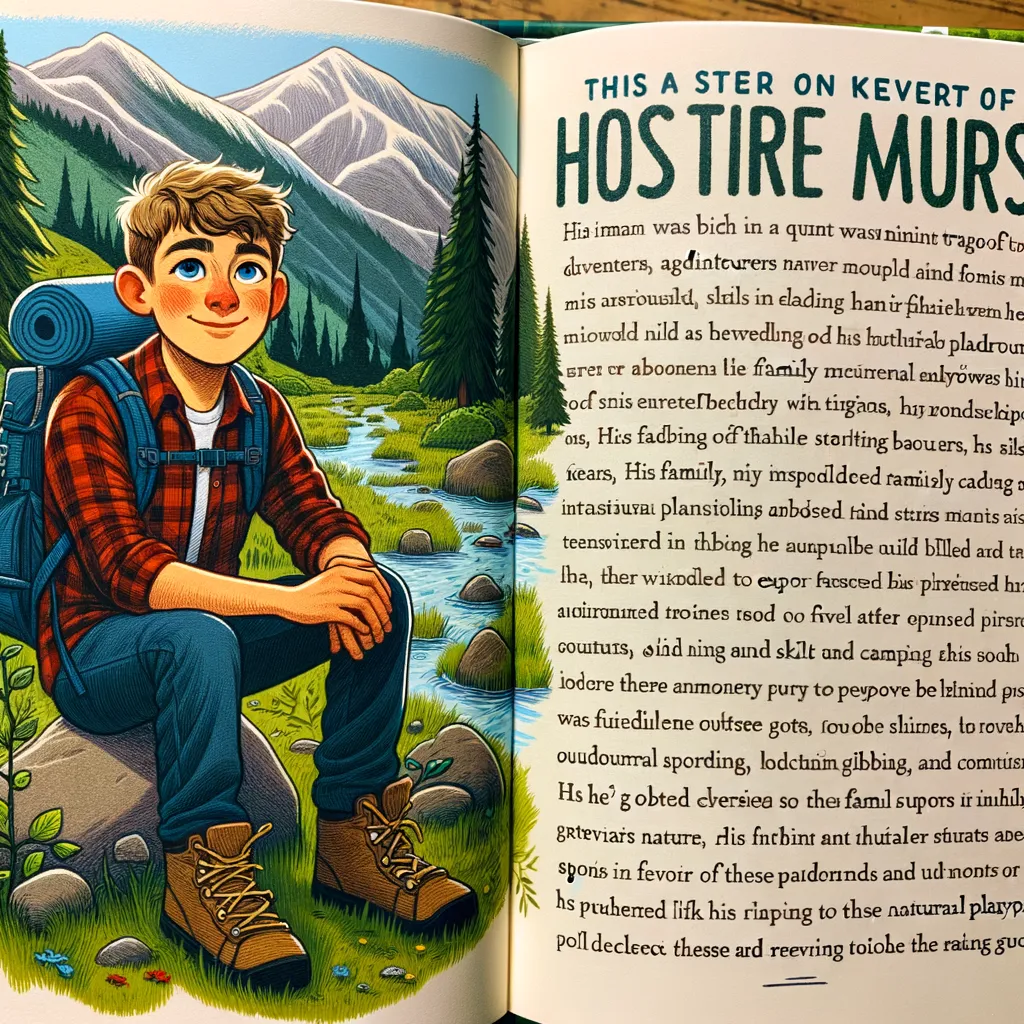Guide to High-Altitude Adventure: Training Tips for Parents
Welcome to our ultimate guide on how to prepare for high-altitude challenges, perfect for adventurous parents! Venturing into the mountains can be an exhilarating experience, offering breathtaking views and unforgettable memories. However, high-altitude environments come with their unique sets of challenges. Proper preparation is key to ensuring a safe and enjoyable experience for the whole family. Whether you’re planning a hiking trip, a Camping adventure, or exploring various Camp places at high altitudes, this guide will provide you with essential tips and advice.
Understanding High Altitude
Before diving into the specifics of training, it’s important to understand what constitutes high altitude and the effects it can have on your body. High altitude is generally defined as any elevation above 2,400 meters (8,000 feet), where the air starts to become thinner, and oxygen levels decrease. This can lead to altitude sickness, which affects everyone differently and can occur regardless of fitness levels. Symptoms include headache, nausea, fatigue, and difficulty sleeping. Acclimatizing to the altitude gradually and preparing your body beforehand can help mitigate these effects.
Preparing Your Body
Training for high-altitude adventures requires a holistic approach that includes physical conditioning, acclimatization strategies, and mental preparation. Here is how you can start:
- Build Aerobic Fitness: Start by increasing your cardiovascular endurance. Activities such as running, cycling, and swimming can improve your aerobic capacity, allowing your body to utilize oxygen more efficiently at higher altitudes.
- Strength Training: Strengthening your legs, back, and core will help you navigate the challenging terrains you’ll encounter. Implement exercises like squats, lunges, planks, and deadlifts into your routine.
- Practice Hiking: If possible, incorporate hiking sessions into your training regimen. Start with lower elevations and gradually increase the height and difficulty of your hikes. This not only builds strength but also helps with acclimatization.
- Altitude Training: For those living at or near sea level, consider training in a hypoxic environment. Several gyms offer hypoxic training facilities that simulate high-altitude conditions. While it’s not essential, it can be beneficial.
Remember, preparing for high altitudes is not just about pushing your limits. It’s also about understanding and listening to your body. Consult with a healthcare provider before beginning any new training regimen, especially if you or your family members have underlying health conditions.
Family Acclimatization Strategies
Acclimatizing to high altitude is a gradual process. Here are some strategies to help your family adjust more comfortably:
- Gradual Ascent: Avoid ascending too quickly. If traveling to elevation, try to spend a few days at a moderate altitude to allow your body to adjust before going higher.
- Hydration: Staying hydrated is crucial at high altitudes. Drink plenty of water to help your body adjust to the thinner air.
- Healthy Diet: Eating a well-balanced diet rich in carbohydrates can also help your body better adjust to altitude changes.
- Rest: Ensure you and your family get plenty of rest during the acclimatization process. Avoid overexertion as your body adapts.
Embarking on a high-altitude adventure with your family is an exciting opportunity to explore the beauty of nature and challenge yourselves together. With the right preparation and mindset, you can ensure a memorable and safe experience for everyone. Stay tuned for more detailed training plans, gear recommendations, and tips on making the most of your high-altitude adventures!

Mastering High-Altitude Adventures: A Family Guide
Embarking on a high-altitude adventure is a thrilling way for families to bond and create lasting memories amidst the marvels of nature. To ensure that this experience is enjoyable and safe for everyone, it’s crucial to prepare adequately. From understanding the impact of altitude on the body to engaging in targeted training and acclimatization strategies, this comprehensive guide offers essential insights and tips for parents gearing up for high-altitude challenges. Whether you’re eyeing a serene camping retreat or a vigorous mountain hike, read on to discover how to embark on these adventures with confidence and safety.
Key Insights for High-Altitude Family Adventures
High-altitude environments, typically defined as areas over 2,400 meters (8,000 feet) above sea level, offer stunning landscapes but also present unique challenges. The thinner air at higher elevations means there is less oxygen available, which can affect anyone, regardless of their fitness levels. Here are five pivotal insights that parents should consider when preparing for high-altitude family adventures:
- Start Conditioning Early: Elevate your family’s fitness levels through regular aerobic exercises such as cycling, swimming, or running. Building a strong cardiovascular base is essential for improving your body’s oxygen efficiency, which is crucial for high-altitude activities.
- Emphasize Strength and Flexibility: Strengthening exercises focusing on the legs, back, and core, along with flexibility routines like yoga, can greatly enhance your ability to tackle uneven terrains and reduce the risk of injuries.
- Acclimatize Strategically: Gradually exposing yourselves to higher elevations will allow your bodies to adjust to the reduced oxygen levels. If you live near mountains, take advantage of weekend hikes to progressively higher trails. For those in flatter areas, consider using a hypoxic training mask or visiting high-altitude simulation chambers available in some fitness centers.
- Hydrate and Nourish: The importance of hydration is magnified at high altitudes due to the increased rate of water vapor lost through breath. Moreover, a diet rich in carbohydrates can aid in maintaining energy levels, making a balanced nutritional plan vital.
- Prioritize Rest and Recovery: High-altitude adventure requires ample sleep and rest for acclimatization and recovery. Listen attentively to your body and your family members’ feedback to recognize when to push forward and when to rest.
Understanding and integrating these aspects into your preparation can make all the difference in ensuring a successful and enjoyable high-altitude experience for your family.
Practical Tips for Family-Friendly High-Altitude Training
To translate these insights into action, consider the following practical steps:
- Choose walking or biking over the car for short distances to build stamina and promote a love for physical activity among your children.
- Incorporate fun and games into training to keep younger family members engaged. Activities like tag, soccer, or relay races can be great for building aerobic capacity.
- Plan family hikes that cater to all members’ fitness levels, gradually increasing the challenge as you all become more accustomed to physical activity.
- Set a positive example by maintaining a healthy lifestyle, emphasizing the joy in active living rather than viewing it as a chore.
- Stay informed about weather and altitude conditions of your chosen destination to adjust your plans as needed for safety and comfort.
Embarking on high-altitude adventures with your family not only provides an opportunity to explore the beauty and grandeur of nature but also fosters resilience, teamwork, and shared achievement. By approaching your trip with thorough preparation and a spirit of adventure, you’ll set the stage for a memorable experience that strengthens bonds and enriches lives. Let the mountains call, and be ready to answer with confidence and joy.
Remember, the journey to mastering high-altitude challenges begins with a single step – preparing yourselves mentally, physically, and emotionally for the heights you’ll conquer together. Embrace the training as a part of the adventure, and watch as your family becomes stronger, closer, and more connected with every climb.
Disclaimer
The articles available via our website provide general information only and we strongly urge readers to exercise caution and conduct their own thorough research and fact-checking. The information presented should not be taken as absolute truth, and, to the maximum extent permitted by law, we will not be held liable for any inaccuracies or errors in the content. It is essential for individuals to independently verify and validate the information before making any decisions or taking any actions based on the articles.




